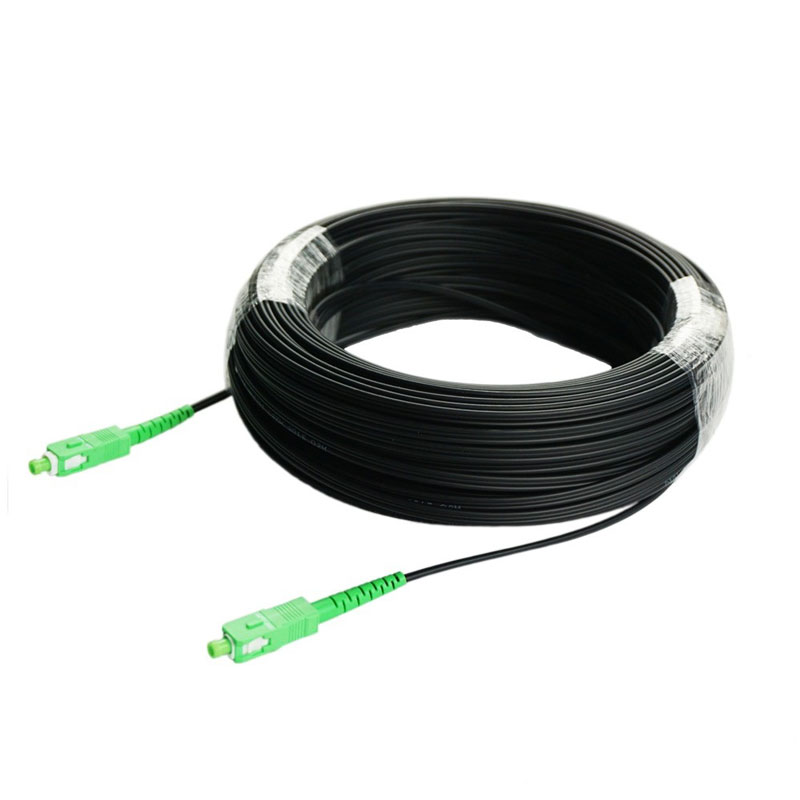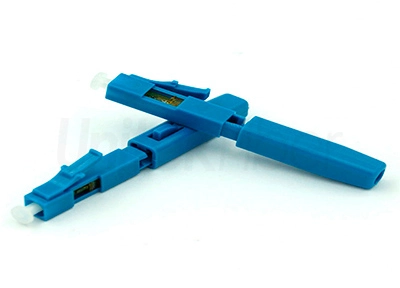
G.657 optical fibers are also called bending loss-insensitive optical fibers. The G657 Fiber Optic Cable which is thinner than ordinary telephone cable is used for FTTH solution. Without G657 optical fiber, there is no large-scale application of FTTH. G657 optical fibers are divided into multiple sub-categories, the commonly used are G657A1 and G657A2.
G652 optical fibers are the most widely used optical fiber in the metropolitan area network. Except for the FTTH Fiber Optic Cable, all other communication Fiber Optic Cable used in the metropolitan area are basically G652 optical fibers. G652 optical fiber is divided into 4 sub-categories and the generally used is G652D.

In the Standard, the Requirement of G.657 and G.652 Minimum Bending Radius of fiber optic cable.
In the relevant standards, The recommended minimum bending radius of G.657A2 optical fiber is to be 7.5mm, while the minimum bending radius of G.652 fiber is required to be no less than 30mm. But the meaning is completely different of the minimum bending radius of them.The minimum bending radius of G.657A2 fiber refers to: the optic fiber is loosely wound with a radius of 7.5mm, and the additional attenuation measured at 1550nm/1625nm does not exceed 0.5dB/1.0dBG. The minimum bend radius of G652D optical fiber refers to: the optical fiber is loosely wound 100 circles with a radius of 30mm, and the additional attenuation measured at 1625nm does not exceed 0.1dB.
The additional loss which caused by the bending of an optical fiber with a bending radius much larger than its diameter is called macro bending loss. The macro bending characteristics of G.657A2 fiber and G.652D fiber are shown in the below table.

Obviously, in this table, the minimum bend radius of G.652D fiber and G.657A2 is not comparable.
G.657 and G.652 fiber anti-bending measured performance
When installing the FTTH fiber optic cable, in order to facilitate the termination of the fiber optic cable, the installer often weld the FTTH optical fiber cable to a small piece of pigtail at the optical fiber splitting box and the ONT (commonly known as "optical modem").
Because the laying environment of the Fiber optic pigtail and the indoor fiber optic cable are the same, the size is the same (the diameter of the fiber optic pigtail is 2.0mm, and the short axis/long axis diameter of the indoor fiber optic cable is 2.0mm/3.0mm). Therefore, compare the fiber optic pigtail and The anti-bending performance of the indoor fiber optic cable is more realistic and can basically reflect the G.652D and the difference in bending resistance of G. 657A2 optic fiber.
Since the macro-bending loss of the optical fiber in ODN is mainly affected by the downstream wavelength, only test the additional loss about the fiber optic pigtail and the indoor optical fiber cable which wound with different radii at the 1490nm wavelength.
Part of the mold tested is shown in the figure below.

From the test results, it can be seen that the bending resistance of the indoor optical fiber cable (G. 657A2) has to throw the pigtail (G. 652D) several blocks, especially under the small bending radius, the bending resistance of the indoor optical fiber cable is even better.
Conclusion and Suggestion
There is a huge difference in the bending resistance of G. 657 and G. 652 optical fiber, and the fiber optic pigtail itself is relatively soft, it is very easy to bend with a small radius.
According to the statistical data of the installation and maintenance failures of a certain metropolitan area network, the installation and maintenance failures caused by the insufficient bending radius of the fiber optic pigtails account for up to 50%. Therefore, it is not advisable to use the optic fiber pigtails to terminate the home fiber optical cables during FTTH installation. , The ended butterfly-shaped optical fiber cable (as shown in the figure below) should be used for installation and termination.
As one of the professional fibre cable suppliers, Unitekfiber can offer:
lFiber optic pigtail connector
lDirect burial fiber optic cable pre-terminated




